A mobile app can hardly succeed without effective advertising. Mobile app advertising has grown exponentially alongside the mobile app market. According to Statista, Global mobile app advertising spending rose from $30 billion in 2014 to $327 billion in 2023.
Spending lots of money is one thing, and spending it effectively is another. This article will explain how to spend mobile advertising budgets effectively. Mobile advertising trends are ever-changing, and you must be a lifelong learner to do it effectively.
Mobile app advertising specifics
Effective advertising strategies differ for different types of mobile apps. What works for games wouldn’t necessarily work for news apps. What works for educational apps wouldn’t always work for fitness apps. You must consider your type of app to set a practical strategy. Your target audience plays a vital role in how you’ll create your ads and the mediums to deploy them on.
If you’re here to learn how to earn money from your application, skip this guide and read the one about apps or APKs monetization.
Important things to do before mobile app promotion
Know your target audience
Your target audience is the specific group your app is designed for. It can be a particular age group, country, or people with shared interests. For example, a casual gaming app will ideally target people between 18 and 35.
You should define your target audience before moving on to app promotion. Understanding your customers is critical to determine how to reach them with ads.
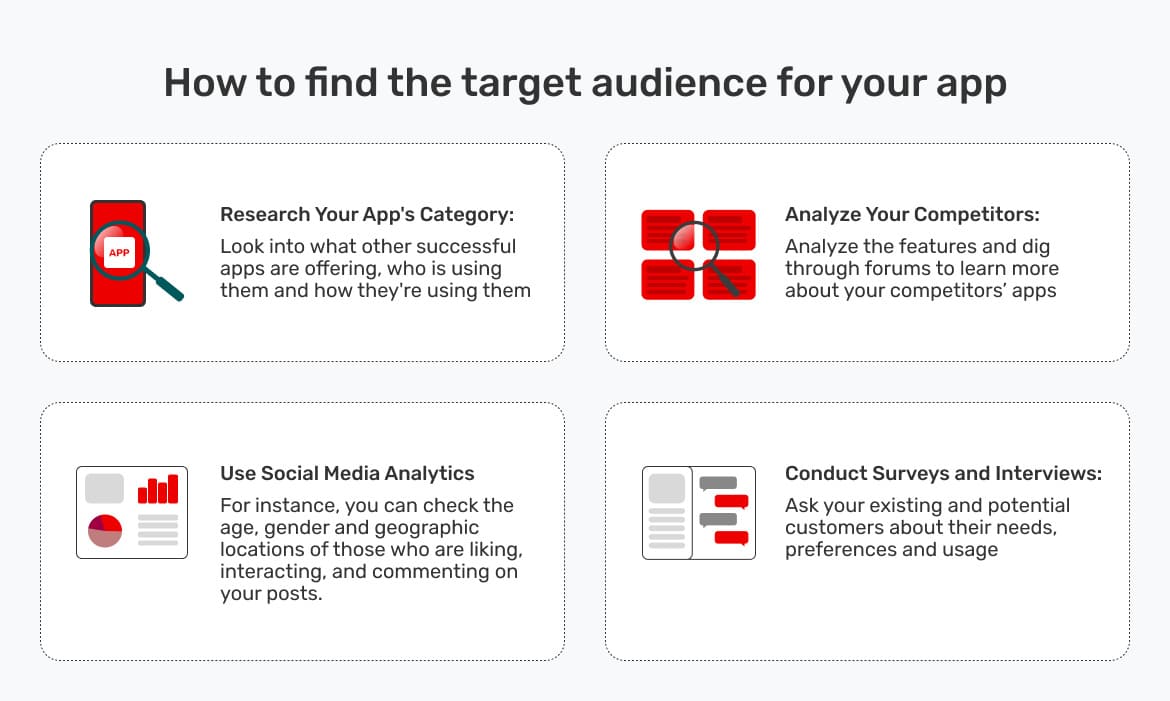
Promote your app before launching it to drive excitement
You don’t have to wait to launch your app before promoting it. It’s advisable to start advertising it before launching to foster anticipation and excitement for your upcoming product. You can give customers a glimpse of what they’ll expect in your ads. You can also run beta tests with a small user group to gather feedback. This feedback will help you detect and improve your app’s blind spots before launching to a mass audience.
App advertising strategies in different launch stages
App advertising occurs in different stages, starting with the short period before launching the app, then shortly after launching, and the post-launch period. Each period demands different strategies for effective results.
Pre-launch strategy for app advertising
1. Conducting market research
Before launching an app, you need to do thorough research about its viability. An idea might sound great, but that doesn’t mean there’s a market for it. Even when there’s a market, who are the top competitors, and can you differentiate your app from them?
Research extensively about your app’s market size and growth prospects. Identify the industry incumbents and their strengths & weaknesses. This information forms the foundation of your application advertisement strategy.
2. Defining the target audience
The next is precisely defining your target audience. Who is your ideal user? Who are you creating the app for? You need to narrow your audience by demographics, such as age, gender, occupation, hobbies, and income level. Knowing your target audience helps you identify their pain points and pitch your app as the solution to their problem.
3. Building a strong brand presence
Your app needs a unique identity to differentiate it from competitors. The identity includes the name, logo, typography, color schemes, graphics, sounds, and user interface. It should resonate with your target audience and convey your app’s value proposition. Your application advertising strategy revolves around this brand identity.
4. App store optimization (ASO)
ASO means optimizing your app to rank high on app store search results. It involves using relevant keywords aligned with your target audience, writing informative app descriptions, and showcasing your app’s features with high-quality screenshots.
The aim of your ASO strategy is to appear on the first page when people search for your app’s category. For example, if you run a fitness app, the aim is to rank high when a random user searches for “Fitness” on the Play Store and App Store.
App launch strategy
1. PR and press releases
You need an effective public relations strategy to draw attention to your app. You can do this by publishing a press statement announcing your app’s release and value proposition. Many journalists scour press releases for story ideas so they can stumble on your press release and decide to publish an article about it.
You can also seek publicity from local news sites or industry publications. Getting into a few niche publications can spur other publishers to write similar stories, spreading the word about your app.
2. Creating a social media buzz
Over 5 billion people use social media, making it one of the best places for marketing an app. From visually appealing Instagram stories to informative Facebook posts and short X (Twitter) tweets, social media offers many formats to create buzz for your app.
Facebook, Instagram, and other apps let you advertise to your exact target audience, so you can easily drum up attention and build a waitlist. The key is making your target audience feel they’re missing out on something if they don’t download the app, i.e., emphasizing the value proposition.
3. Organizing launch events
You can organize virtual or physical app launch events and invite industry experts. Hosting launch events lets you engage directly with your target audience and share insights about your app’s development. It adds a human factor that makes people more eager to try your app.
Post-launch app advertising tactics
1. User acquisition strategies
User acquisition refers to the tactics needed to attract new users to your app. These tactics range from search engine optimization (SEO) to social media ads, email marketing, and app partnerships. Each app has its suitable user acquisition strategies, so it’s important to learn what works for you and stick with it long-term.
2. Content marketing
Content marketing is an effective strategy for advertising apps. It involves creating and publishing content on blogs, news sites, and forums to draw attention to your app. For example, you can add a blog section to your app’s website and write relevant articles for your target audience. Someone visiting your website to read articles can convert into a user. Consistent content marketing increases your app’s user base.
3. Leveraging influencers
Influencers are the movers and shakers of social media. They have significant, engaged followings you can leverage to promote your app. These range from micro-influencers with less than 100,000 followers to mega-influencers with over 1 million followers.
You can pay influencers to promote your app to their followers. The key is finding the right influencers in your niche. For example, a tech gadgets reviewer is best suited to promote a VPN app. An influencer’s app recommendation can do wonders for your user growth.
How to market your app effectively
1. Choose an ad network
Think outside the box when choosing an ad network. The most obvious platforms like Google Ads or Facebook are a surefire solution, but they may not suit you if you promote, let’s say, an iGaming app. Moreover, some advertising platforms send millions of ad views from the geos you target at a lower price.
Adsterra is well-known for its abundant quality traffic from 28K+ direct publishers. You can enjoy multiple conversions and clicks outside the mainstream competition channels.
Adsterra specifics:
- Vertical-friendly policy
- Expertise that embraces even complex verticals like Ecommerce, Sports and iGaming
- 20+ targeting settings
- Cost optimization tools: Smart CPM, CPA Goal
- 3-level security
2. Create a landing page
A landing page is a standalone web page designed to convert viewers into leads and customers. It’s akin to a virtual elevator pitch. You should create an appealing landing page for your mobile app. This page should have precise information on what features and benefits people should expect from your app. You should provide a detailed explanation of how your app works alongside screenshots and demo videos.
The landing page should end with a call-to-action button that takes visitors to your app’s listing on the Apple App Store or Google Play Store. The good news is that you can use landing page builders to create yours with little hassles. These builders provide professional templates that you can use to create an appealing landing page.
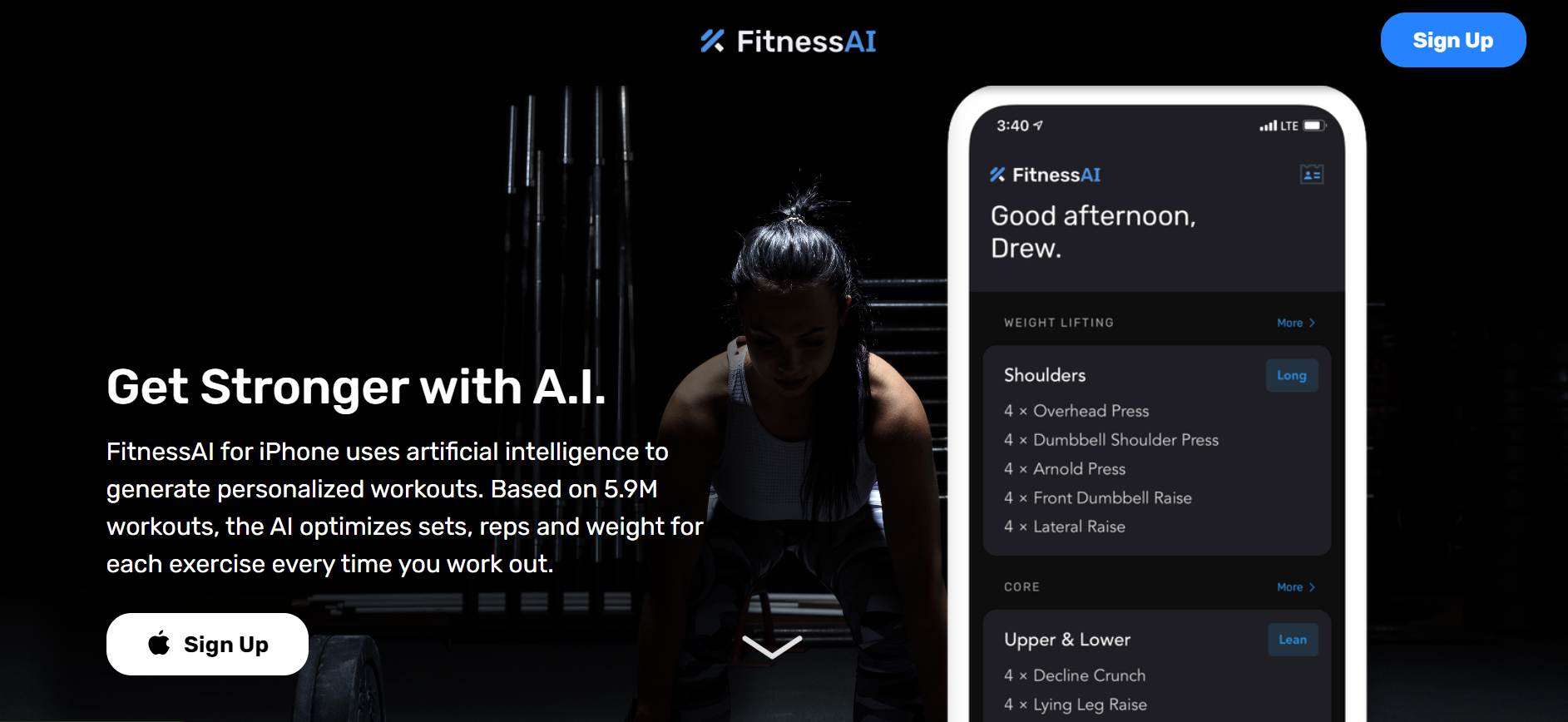
Source: FitnessAI
3. Partner with influencers
Influencers have become a big part of the internet via social media platforms. They have lots of followers that view and engage with their content, which presents a good idea of how to advertise your app. You can connect with influencers on different social media platforms (Twitter, Instagram, Facebook, etc.) and get them to promote your app for a fee.
Big-shot influencers with a large audience may be unaffordable for small brands, but they aren’t the only category of influencers you can work with. There are also “micro-influencers” with between 5,000 and 50,000 followers with a loyal fanbase that may be interested in marketing your app for a relatively affordable price.
4. Pay attention to email marketing
There are over 4 billion active email users, which makes it one of the best channels for mobile app advertising. If you already have an email newsletter, you can tell your subscribers about your app and how it can help them.
You can use existing email databases to target potential users but be careful not to run afoul of spam laws. On regular emails, you can paste links to your app in the signature field. The idea is to use email to expose your app to as many people as possible.
5. Create a teaser video
A teaser video is a good idea of how to advertise an app. The video should be short (around 30 seconds) and demonstrate your app’s main features. You can include it in your landing page or social media page and advertise it. Videos are interactive and can convey much more information within a short period than text.
Avoid making the teaser video too salesy or shiny. Go straight to the point and highlight the best features of your app.
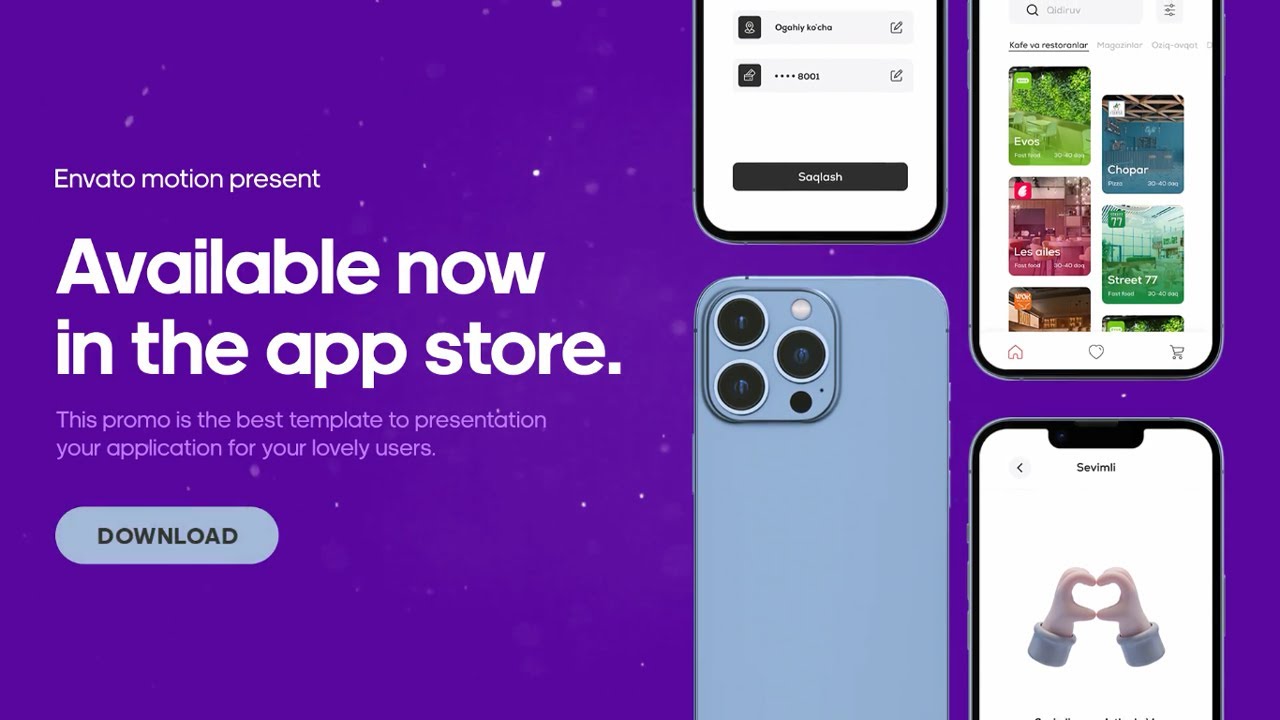
6. Pay attention to SEO
Search engine optimization is important to determine how to market a mobile app. Ideally, your app should show up on the first page when someone looks up related queries on a search engine. Identify the most relevant keywords related to your app and include them in your landing page to increase the chances of ranking high. Good search engine optimization can get your app a lot of unpaid traffic.
7. Work on your app store optimization (ASO)
App store optimization is similar to search engine optimization but for the Apple App Store and Google Play Store. It involves using the right keywords and keyword density to ensure that your app ranks high in customer searches. A lot of iPhone and Android users find their apps through search, so your app description is something to focus on to advertise it effectively.
You can use competitor research platforms like Data.ai to search for phrases, see which apps come up, and then mimic their description format for your relevant keywords.
8. Pay attention to social media channels
Social media helps guide you on how to market an app successfully. Boosting your visibility on social media platforms like Facebook, Instagram, and LinkedIn improves your brand reputation and attracts more users to your mobile app. You can leverage social media to ask for feedback from your users and discuss how to improve the app. Building strong relationships with your users on social media reaps great rewards.
9. Leverage your website (blog)
If you already have a website with high traffic, you can leverage it to promote your app successfully. For example, you can include a banner on your website that tells visitors about your app in a non-intrusive way. You can also write blog posts about your app and add a direct link to it, which helps with search engine optimization.
10. Create an eye-catching app icon
There are millions of apps on both the Google Play Store and Apple App Store, which translates into intense competition. You’ll need to differentiate yourself from the competition if you want to succeed, and one of the best ways to do that is with a unique app icon. Tips to make your icon stand out include:
- Use a unique shape;
- Use a limited number of colors;
- Avoid using too much text;
- Don’t use a photo because it blends in too much.
Your icon should be as simple as possible to make it easy for users to recognize.
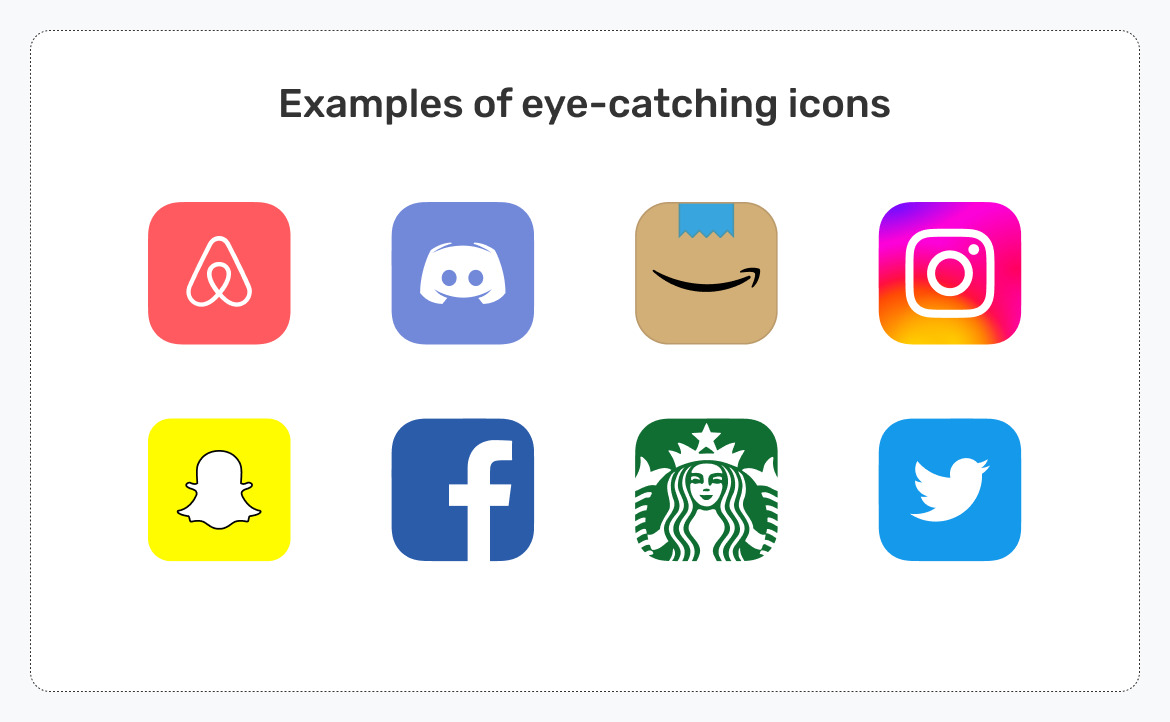
11. Take great screenshots
Appearance matters a lot in mobile app advertisements. When someone comes across your app on the app store, one of the first things they look at is your screenshots, so you shouldn’t overlook this aspect.
You shouldn’t just take a bland screenshot of your app and put it on your app store profile. Use captions and visual elements to spice them up. Ensure the screenshots are of high quality to make them more appealing to viewers.
Take Facebook for example:
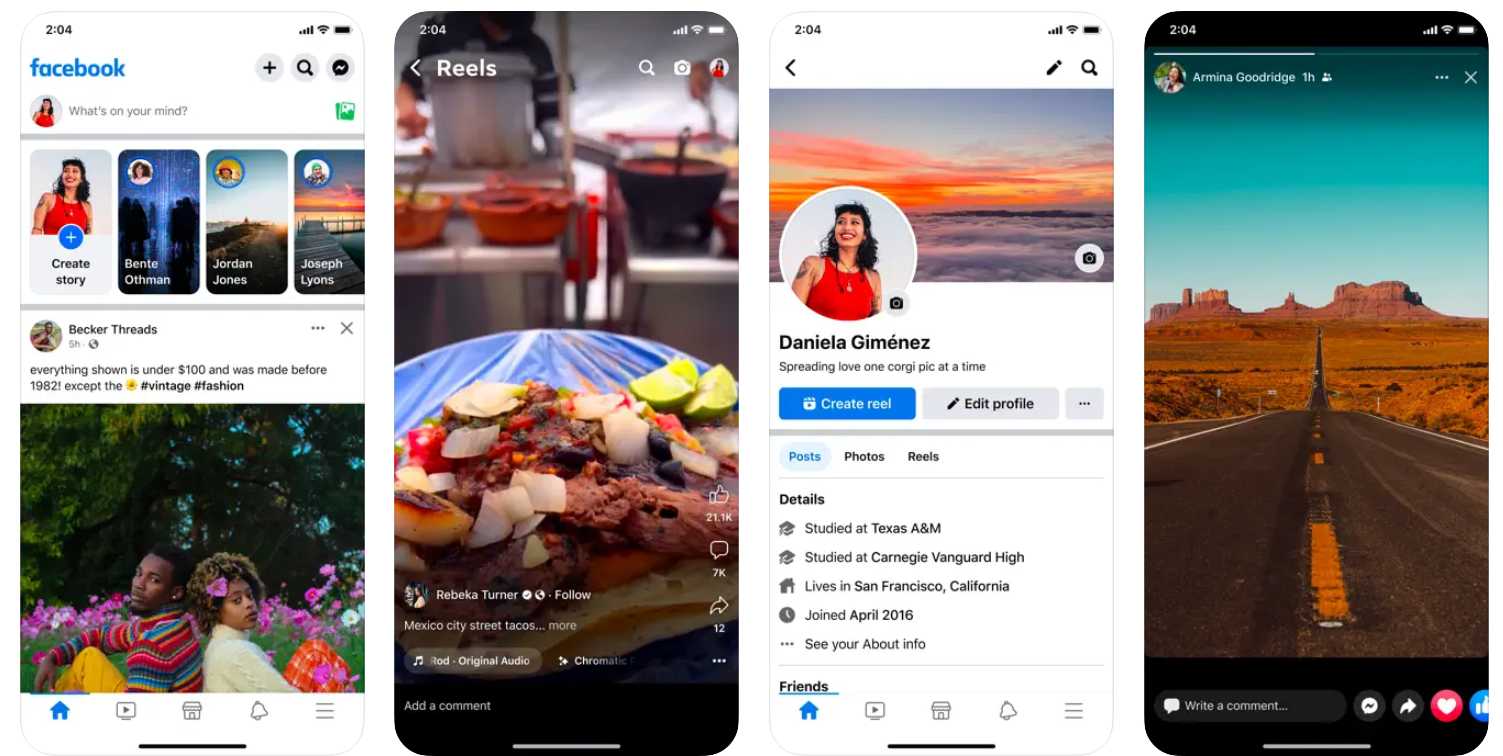
The screenshots make it clear what the app is about and what you can do after downloading it.
12. Include app download links on your website
You should include download links for your app on your website if you have considerable traffic flowing to it. Preferably, you can include download buttons at the footer that redirect your visitors to your app page on the respective app stores.
Take, for example, the news outlet The Wall Street Journal:

This publication gets hundreds of thousands of page views daily, some of whom proceed to download their app after seeing those buttons.
13. Pitch tech blogs
Many technology blogs are willing to entertain pitches for mobile apps that they can promote to their readers. Popular blogs include TechCrunch, The Verge, Mashable, Engadget, etc. You can send a message to the editorial team to convince them to include your app in their reviews. They usually look out for beautiful designs, original content, and functionality when considering which apps to review.
Your pitch should include:
A link to your app;
A summary of your app and what makes it unique;
High-quality screenshots;
Promo codes if your app requires payment to access.
One of the best mobile app promotion strategies is getting featured on a popular blog.
14. Ask for app reviews
Have you ever received a prompt to drop a review while using an app? The answer is likely yes. Your fellow app developers do this because app stores tend to promote apps with good ratings over those without. Good ratings also matter to prospects when deciding whether to download your app or not.
You can ask your users to leave honest reviews of your app. These reviews let you measure customer satisfaction and know where to make improvements. Take the time to respond to reviews, including the bad ones. Regardless of what your users say, let them know you’re always working hard to improve their user experience. Customer engagement is an essential part of marketing a mobile app.
15. Talk to one user at a time
Awards can go a long way in marketing your app. They give you significant exposure and, in turn, downloads. You can apply to get your app shortlisted for awards from reputable organizations. The more prestigious the award, the better for your app. Some prestigious ones include:
- Apple Design Awards;
- Ericsson Innovation Awards;
- The Webby Awards;
- The Edison Awards.
Different awards have different requirements, so ensure you qualify for the ones you’re applying for. This is one of the best app marketing strategies, but it is very competitive.
16. Apply for awards
The primary goal of mobile app advertisement at the beginning should be user retention instead of user acquisition. If you can get a small yet loyal group of users who’ll provide honest feedback for your app, you’ve conquered the biggest obstacle. Have direct conversations with this group of users and take their feedback seriously.
Listen to your small group of users and offer help when they need it. Happy customers can advertise your app via word of mouth and attract more users faster than other types of marketing can.
17. Use your social network
Social media is an under-utilized marketing channel for many businesses. Regular social media posts can go a long way in getting users for your mobile app. You can even post the same message multiple times over a month or two; doing so means it’ll get to more of your social media audience.
Also, use social media to announce new features and milestones for your app. You never know which one might pique a follower’s interest and make them download your app.
18. Promote your app in-store
If you have a physical store, you can use it for advertising your mobile app. For example, if you run a restaurant, you can place a sticker at the entrance with a QR code that takes the customer’s phone to the link where they’ll download your mobile app and begin ordering from you. A simple sticker for the Google Play Store or App Store can also suffice, as it lets customers know that you have a mobile app.
You can also put your QR code on your business card so that everyone who gets that card can download your app after a simple scan.
